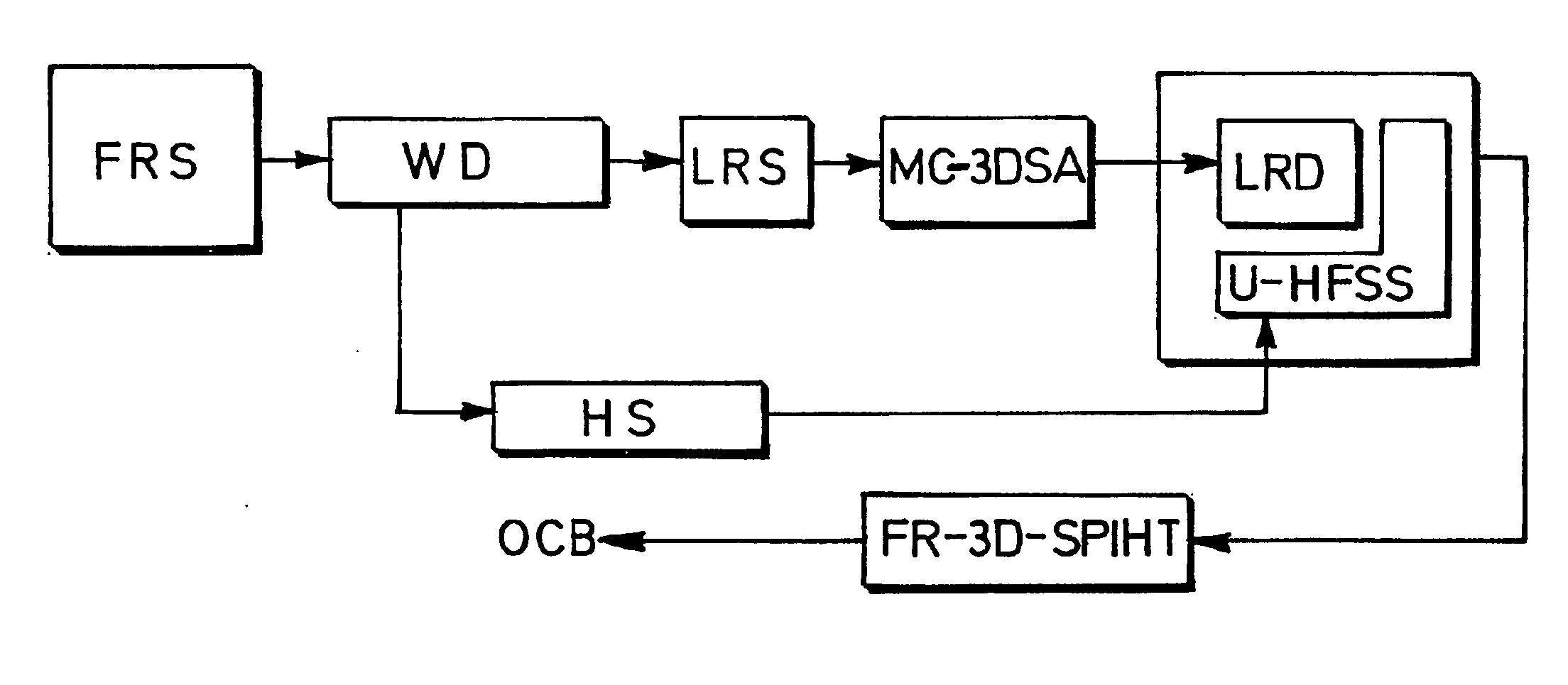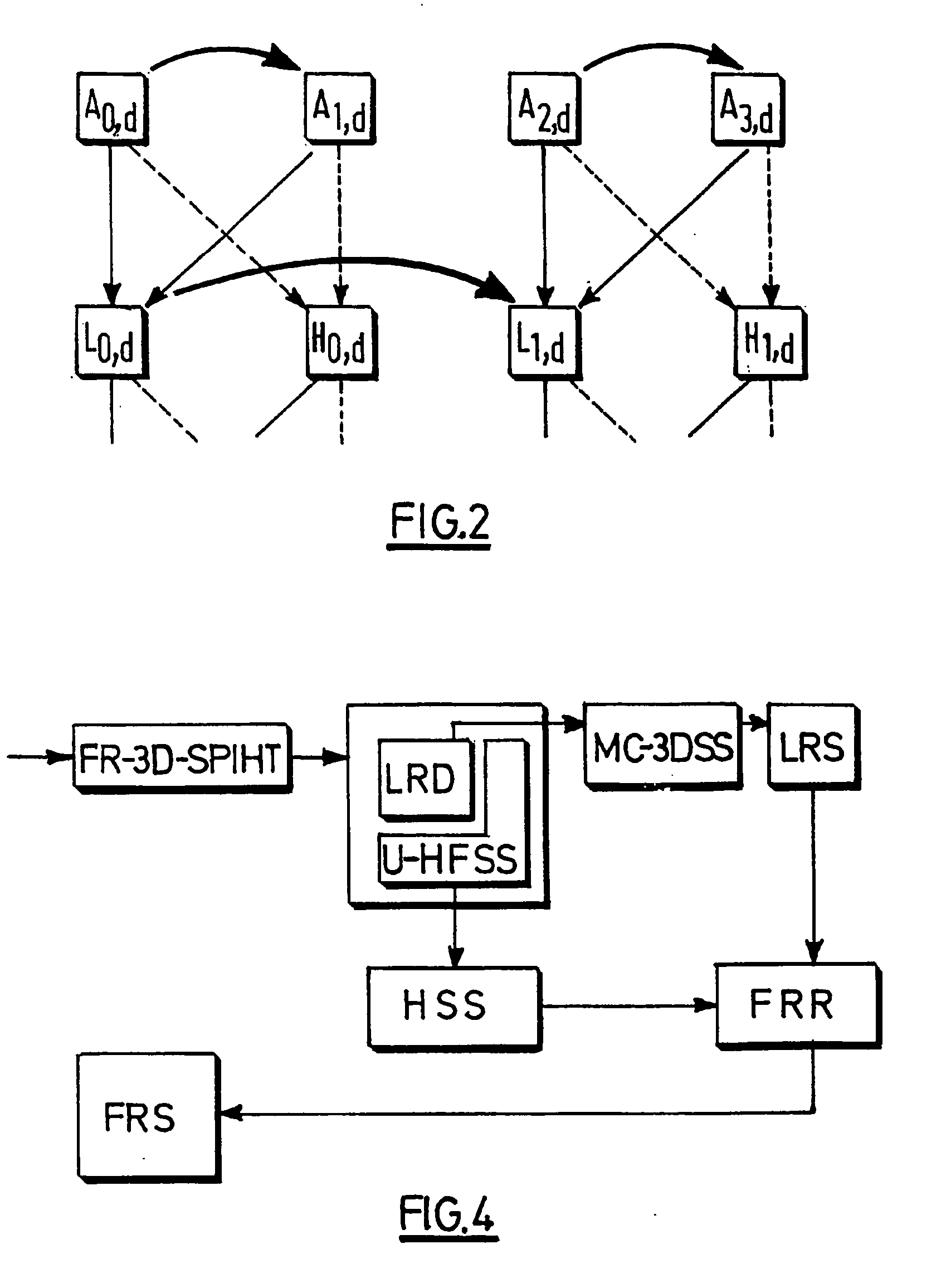Drift-free video encoding and decoding method and corresponding devices
a video encoding and decoding technology, applied in the field of drift-free video encoding and decoding methods and corresponding devices, can solve the problems of lack of coding efficiency, shortcoming of layer-based scalability schemes, and inability to perfect the video sequence at lower resolution, so as to achieve better coding efficiency
- Summary
- Abstract
- Description
- Claims
- Application Information
AI Technical Summary
Benefits of technology
Problems solved by technology
Method used
Image
Examples
Embodiment Construction
The proposed solution (i.e. a spatial scalability with no drift in a motion compensated 3D subband codec) is now explained with reference to its two main steps: (a) motion compensation at the lowest resolution, (b) encoding the high spatial subbands.
First in order to avoid drift at lower resolutions, Motion Compensation (MC) is applied at this level. Consequently, as illustrated in FIG. 2, one first downsizes (reference d) the GOF using wavelet filters, and the usual 3D subband MC-decomposition scheme is then applied to this downsized GOP instead of the fall-size GOF. In FIG. 2, the temporal subbands (L0,d, H0,d) and (L1,d, H1,d) are determined according to the well-known lifting scheme (H is first defined from A and B, and then L from A and H), and the dotted arrows correspond to the high-pass temporal filtering, the continuous ones to the low-pass temporal filtering, and the curved ones (between low frequency spatial subbands A of the frames of the sequence, referenced A0,d, A1...
PUM
 Login to View More
Login to View More Abstract
Description
Claims
Application Information
 Login to View More
Login to View More - R&D
- Intellectual Property
- Life Sciences
- Materials
- Tech Scout
- Unparalleled Data Quality
- Higher Quality Content
- 60% Fewer Hallucinations
Browse by: Latest US Patents, China's latest patents, Technical Efficacy Thesaurus, Application Domain, Technology Topic, Popular Technical Reports.
© 2025 PatSnap. All rights reserved.Legal|Privacy policy|Modern Slavery Act Transparency Statement|Sitemap|About US| Contact US: help@patsnap.com



